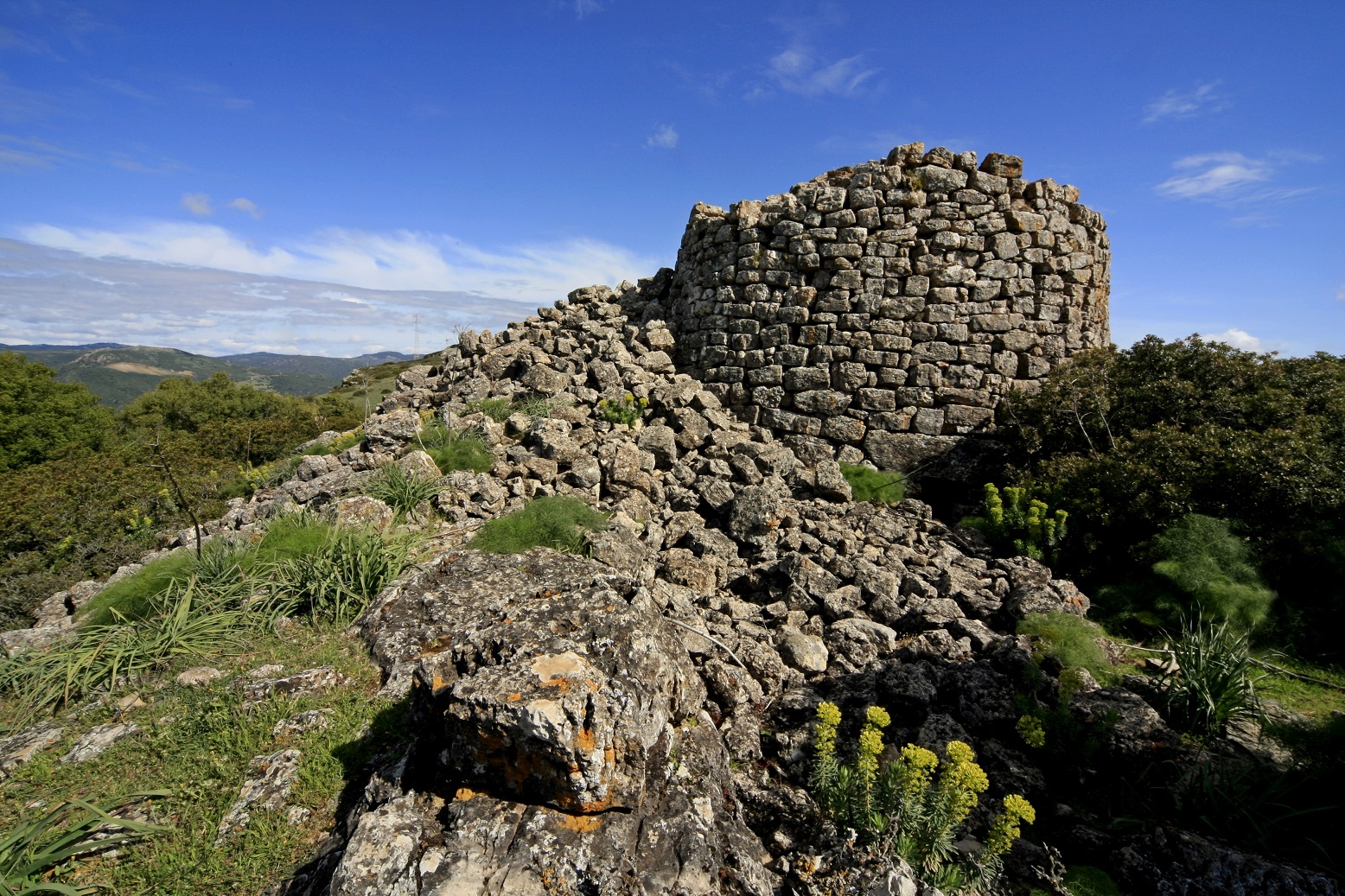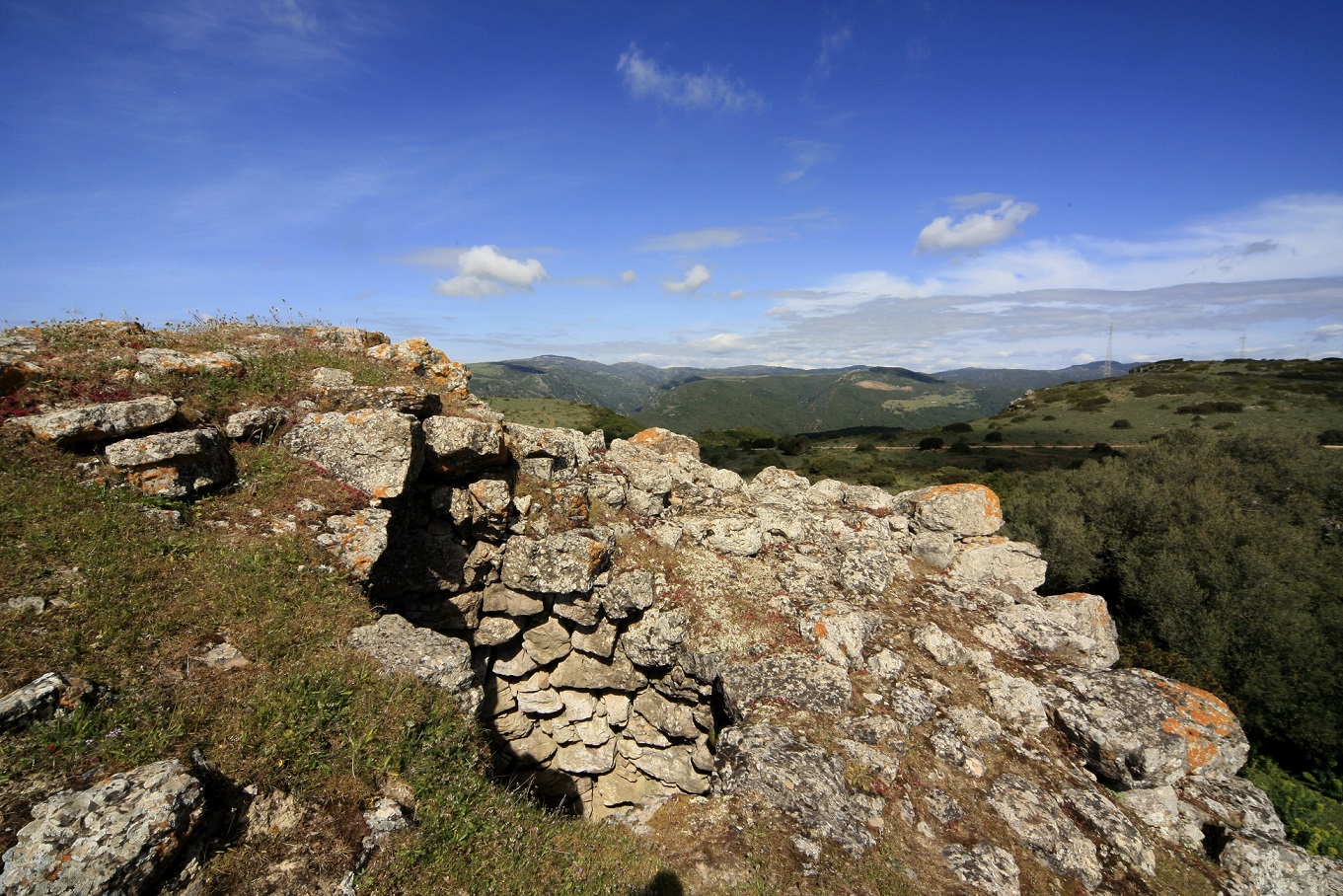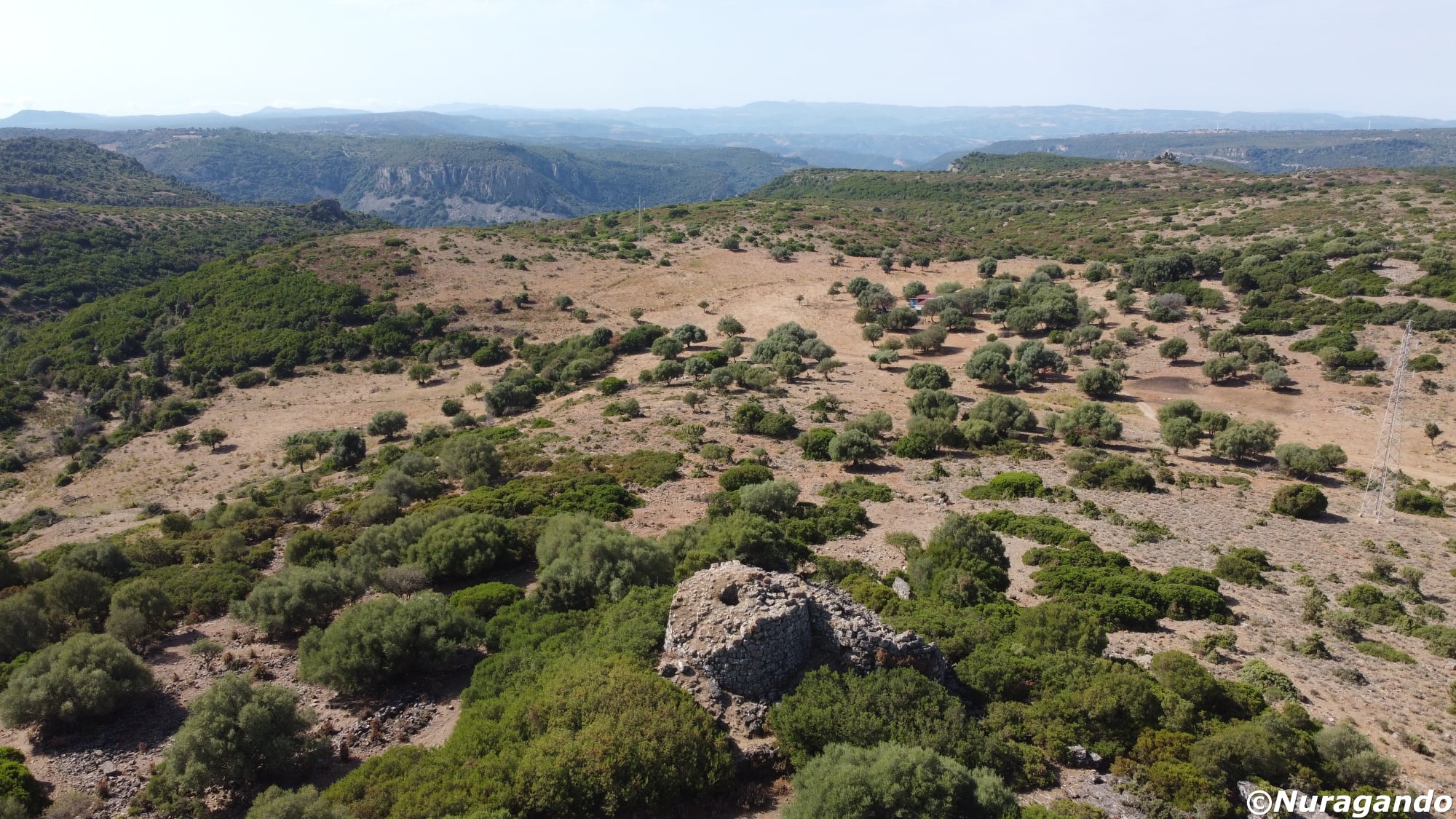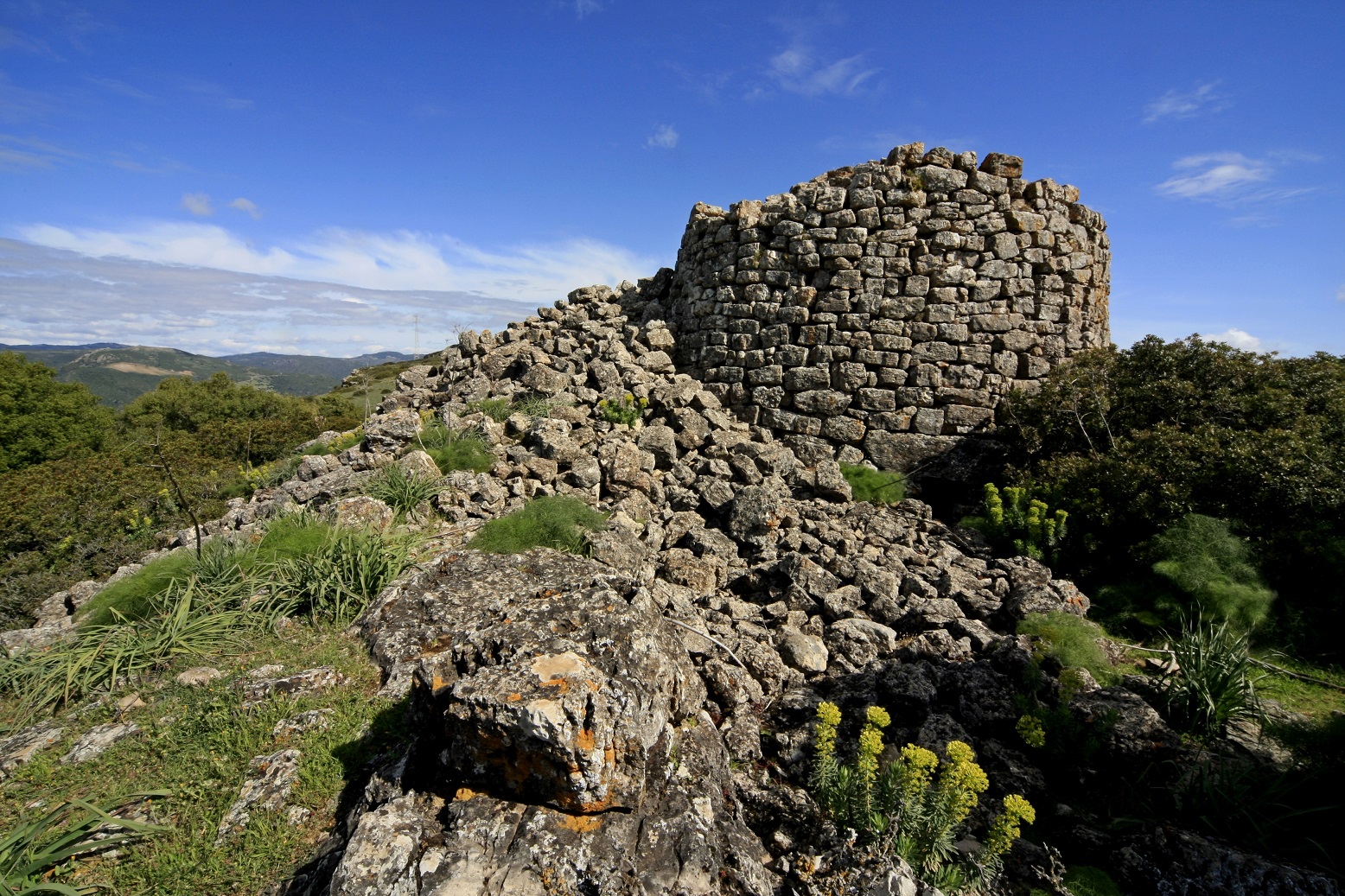“The nuraghe ‘S’Ulimu’ (Ulassai), which splendidly towers towards the sky with its powerful tower, indifferent to the passage of time, rises in the plain of ‘Genna ‘e Pauli’, a location rich in streams and springs… The monument was built with large limestone blocks from the surrounding area… on-site, the architrave is visible, measuring almost 2.50 meters in length… To the east of the nuraghe, the remains of a village are visible, consisting of circular huts scattered among the vegetation of the surrounding area…”
Reading this passage from the booklet “Siti archeologici d’Ogliastra”, edited by the archaeologist Caterina Nieddu, and comparing it with the photo by Andrea Mura-Nuragando Sardegna and Gianni Sirigu, its powerful structure is surprising, especially the size of the architrave, which should weigh between 50 and 60 quintals.
The consequent questions are mandatory and relate, in general, to most nuragic structures: how did our ancestors transport and position these enormous monoliths, and why did they want to “complicate their lives” by choosing such large proportions?
If one day we manage to discover what function or functions the nuraghi served, the question would finally find, probably, the hoped-for solution.









